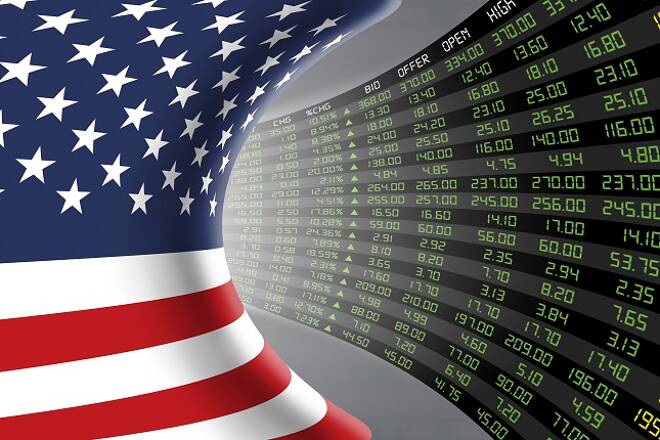Advertisement
Advertisement
Dollar Index Rebounds after Fed Member Comments Spook Short-Sellers
By:
The breakdown of the components of the index shows the Euro lost 0.01% against the U.S. Dollar. The British Pound lost 0.39%. The Japanese Yen lost 0.58% versus the greenback. The Swiss Franc was unchanged. The biggest winner was the Canadian Dollar. It gained 0.98% against the U.S. Dollar.
The U.S. Dollar posted a two-sided trade against a basket of currencies last week before finishing marginally higher. Nonetheless, it was enough to produce a potentially bullish technical closing price reversal bottom. The price action suggests short-sellers lost confidence in their attempt to drive the index beyond the three-month low hit early in the week.
This loss of confidence was fueled by uncertainty, and the uncertainty was created by comments from Federal Reserve officials and worries over the outcome of the meeting between U.S. President Donald Trump and Chinese President Xi Jinping at the G-20 summit in Osaka, Japan on Saturday.
Last week, September U.S. Dollar Index futures settled at 95.725, up 0.007 or +0.01%.
How the Components Performed
The breakdown of the components of the index shows the Euro lost 0.01% against the U.S. Dollar. The British Pound lost 0.39%. The Japanese Yen lost 0.58% versus the greenback. The Swiss Franc was unchanged. The biggest winner was the Canadian Dollar. It gained 0.98% against the U.S. Dollar.
Fed Member Comments Key Event
The key event that most attribute to the sharp reversal in the U.S. Dollar earlier in the week were comments from Federal Reserve Chairman Jerome Powell and St. Louis Federal Reserve President James Bullard on Tuesday, which dampened hopes by some investors that Fed policymakers would deliver a half-point interest rate cut in July.
Powell held close to his comments from the previous week after the Fed’s June interest rate decision and release of its monetary policy statement, saying that while there is greater uncertainty about trade and worries about the global economy, policymakers don’t know how long this may last or how serious the drag might be. Traders read this to mean that Powell was not endorsing the 50 basis point rate cut that the markets had been pricing in.
“The question my colleagues and I are grappling with is whether these uncertainties will continue to weigh on the outlook and thus call for additional policy accommodation,” Powell said in brief remarks ahead of a moderated discussion at the Council on Foreign Relations in New York.
Bullard, who was the lone dissenter from the Fed decision to hold rates steady at its June meeting, reiterated that he though a quarter-point rate cut would be a wise “insurance” move. However, he also didn’t endorse a half-point rate cut.
“I think 50 basis points would be overdone,” Bullard said on Bloomberg Television.
Component News
The Euro fell from a multi-month high on Powell and Bullard’s comments, but then fell into a range. Keeping a lid on the single-currency was the drop in the chances of a 50 basis point cut by the Fed in July, but underpinning the Euro was the widely expected 25 basis point cut.
Low volatility in the equity markets and an easing of tensions between the United States and Iran, encouraged investors to flee the safe-haven Japanese Yen and Swiss Franc. A tightening of the spread between U.S. Government bond yields and Japanese Government bond yields also made the dollar a more attractive asset than the Yen.
The Canadian Dollar was helped by firming crude oil prices, but more importantly by the divergence in monetary policy between the U.S. Federal Reserve and the Bank of Canada. Traders said strong Canadian economic indicators played down the probability of an interest rate cut by the BoC.
About the Author
James Hyerczykauthor
James Hyerczyk is a U.S. based seasoned technical analyst and educator with over 40 years of experience in market analysis and trading, specializing in chart patterns and price movement. He is the author of two books on technical analysis and has a background in both futures and stock markets.
Advertisement
